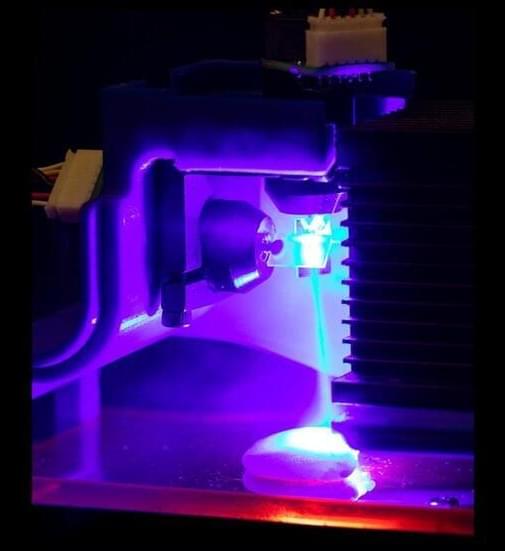Even though it’s now possible to 3D-print foods into millimeter-precise shapes and forms, cooking those printed foods is still a fairly inexact process. Scientists are trying to change that, by using lasers to cook foods to specific optimized standards.
Led by PhD student Jonathan Blutinger, a team at Columbia University started by pureeing raw chicken then extruding it through the nozzle of a 3D food printer, creating samples measuring 3 mm thick by about one square inch (645 sq mm) in area. They then precisely heated that chicken via pulses of either blue or near-infrared laser light, at wavelengths of 445 nanometers for the former and either 980 nanometers or 10.6 micrometers for the latter.
The laser moved across the meat in various trochoidal spiral patterns, with cooking times ranging from five to 14 minutes. An infrared camera continuously measured the surface temperature of the chicken, while eight embedded thermistors monitored its internal temperature.
